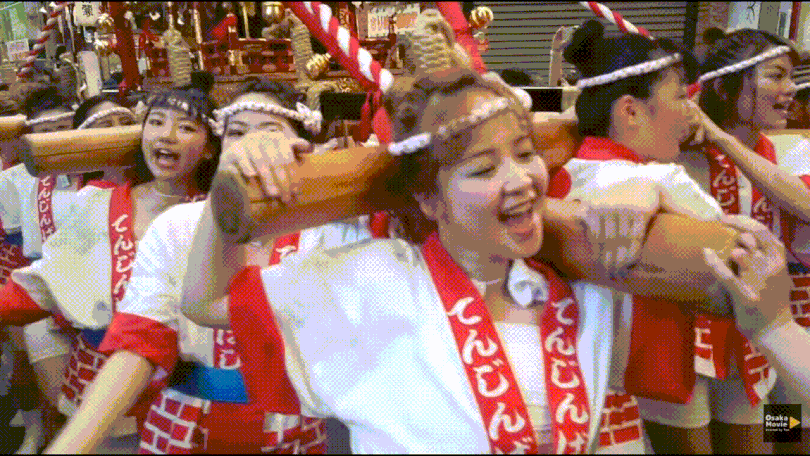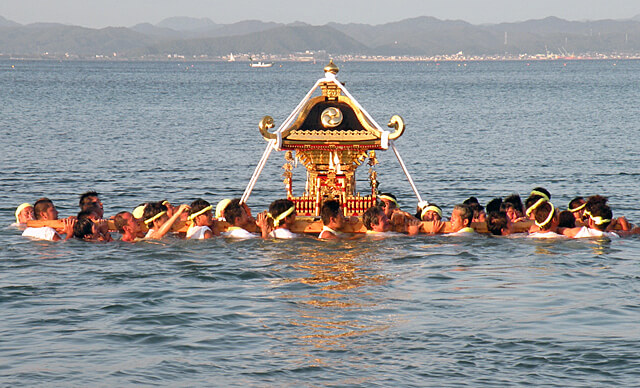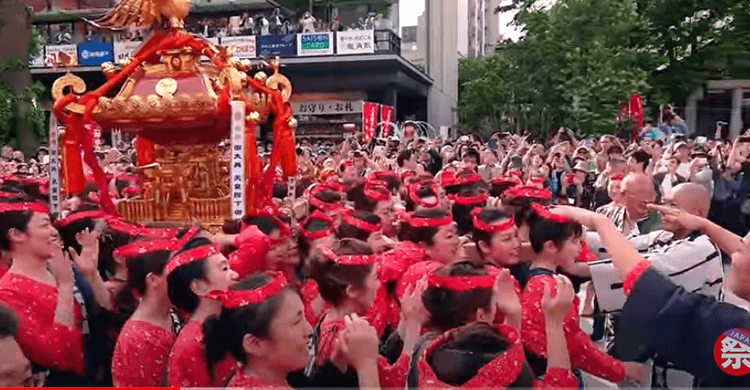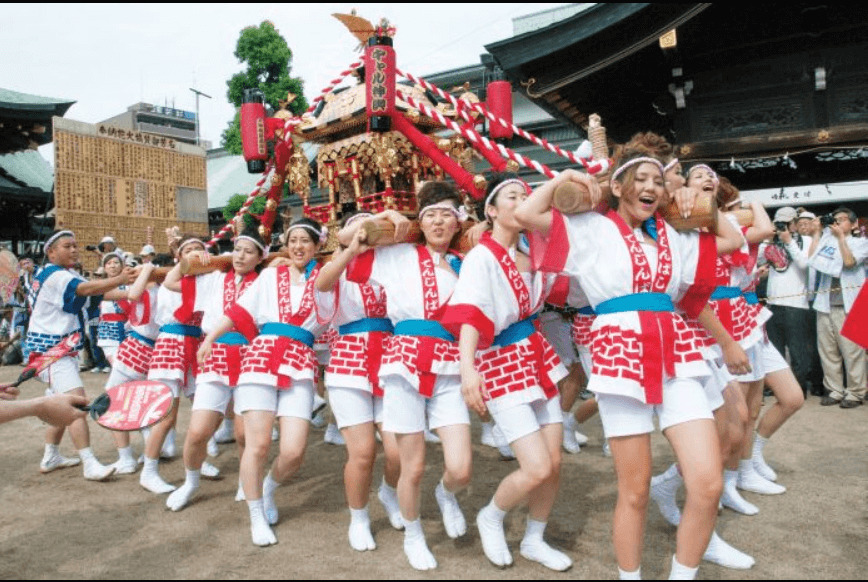Contents
「 Wasshoi ! Wasshoi ! ・・・」 this noisy shouting and cheering, do you want to join that ?
Hi everyone how are things going? Today’s topic is “Festival” (Matsuri in Japanese) which is no matter where you go not only in Japan but also non-combat areas or countries around the world, you’ll meet noisy, energetic, boisterous events of festival such as Brazil’s Rio Carnival, Italy’s Venice Carnival, Spain’s La Tomatina and so on throughout the year.
Upon checking on the number of festivals held in one year, this is not sure but it is probably around 30,000 and Japan is probably one of top three rank of numbers in the world .
The carriers carry the portable shrine with a respectful feeling for the god, and walk around the town while shouting. The shouts vary depending on the region, but generally “Wasshoi”, “Essa”, and “Soiya” are used.
There are various theories about the origin of these shouts, but they are said to mean “Wasshoi” means “carrying harmony and/or carrying peace with the heart of everyone ”,“Essa” “carrying”, and “Soiya”“go for it” respectively.
Now let’s watch the scene where men and women with tattoos carrying a portable shrine around the city with energy and enthusiasm.
What’s Matsuri?
Matsur is chiefly of sacred origin, related to the cultivation of rice and the spiritual well-being of local communities.
They derive ultimately from ancient Shinto rites for the propitiation of the gods and the spirits of the dead, and for the fulfilment of the agricultural round.
Some of these Shinto rites were incorporated, along with Buddhist and Confucian rites and ceremonies imported from China, into the imperial calendar of annual observances.
The word “matsuri” includes the rites and festivals practiced in both Folk Sinto and institutionalized Shinto.
A matsuri is basically a symbolic act whereby participants enter a state of active communication with the gods (kami); it is accompanied by communion among participants in the form of feast and festival.
In a broad sense, matsuri may also include festivals in which the playful element and commercial interests have all but obliterated the original sacramental context.
The Matsuri and the Seasons
Matsuri is in origin and tradition closely related to rice-centered agriculture, especially the growing cycle of rice.
Among annual rites, spring and autumn matsuri are the most important. The spring festivals invoke a rich harvest or celebrate an anticipated good harvest; the autumn festivals are held in thanksgiving for a plentiful harvest.
Besides spring and autumn fetes, there are summer festivals (natsu matsuri) and winter festivals (fuyu matsuri).
In farming areas the summer matsuri has the role of driving away natural disasters that might threaten the crops.
In the cities, especially since the medieval period (mid-12th-16th centuries), ther role of such festivals has been to ward off plague and pestilence.
The winter matsuri, held between the harvest and spring seeding, has elements of both the autumn and spring matsuri.
Thus, Japanese matsuri is synchronized with seasonal changes and are classified according to the four seasons.
And speaking of Matsuri, what is indispensable is “Dashi (festival floats)” and “Mikoshi (portable shirin)” .
How do Dashi and Mikoshi differ from each other?
★ Mikoshi are carried on people’s shoulders, and not allowed to ride on a mikoshi
A portable shrine is a sacred religious palanquin (also translated as portable Shinto shrine) that serves as the vehicle to transport a deity in Japan while moving between main shrine and temporary shrine during a festival or when moving to a new shrine.
Often, the portable shrine resembles a miniature building, with pillars, walls, a roof, a veranda and a railing.
It is called mikoshi (神輿) or omikoshi (お神輿) in Japanese. People bear the portable shrine on their shoulders by means of two, four (or sometimes, over six) poles and bring it from the shrine, carry it around the neighborhoods that worship at the shrine.
The portable shrine is believed to ward off misfortune and wish for the happiness of its people.
For further information on Mikoshi, please visit the webpage of “Mikoshi“, thanks
★ Dashi are pulled by people, and people can ride atop the dashi
Dashi is essentially colorfully decorated floats that appear in Japanese festivals, pulled and moved along the street by large groups of people.
In general, they are built to stand tall, and their height can range from just one meter all the way up to an impressive ten meters, in a wide variety of types and styles.
Dashi is called by different names depending on the festival and the region of the country.
Let’s take following well-known examples,
Kasaboko – Saitama prefecture’s Chichibu Festival.
Danjiri – A name used primarily in the Kansai region at festivals such as the Kishiwada Danjiri Matsuri in Osaka.
Yamahoko – Festivals such as the Gion Matsuri in Kyoto.
Yamakasa – Festivals such as Fukuoka’s Hakata Gion Yamakasa.
Hikimono – Festivals such as Tokyo’s Kanda Matsuri and Nagasaki’s Nagasaki Kunchi.
In addition, dashi is sometimes referred to as hikiyama and at other times are simply called yama.
In summary,
Japanese festivals are deeply rooted in the lives and culture of Japanese people, and they are traditional events to convey gratitude, wishes, and other things to the gods.
They also play a role in strengthening the bonds of the community by having people enjoy together.
Japanese festivals are diverse and attractive, but in recent years, there are fewer festivals that have fewer successors and participants due to aging and population decline.
Therefore, a project called “Japanese Festivals We Want to Leave for the Future” was launched. This is an initiative to introduce festivals from all over Japan and convey their charm and value widely to protect them.
Japanese festivals are precious cultural heritage that enrich the hearts of Japanese people. Please try to experience Japanese festivals in your area or destination











Leave a Comment